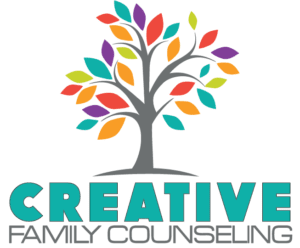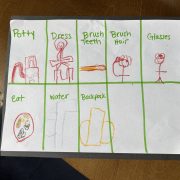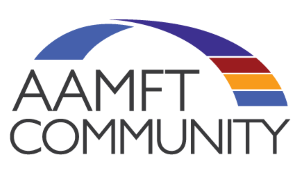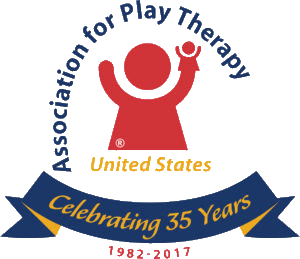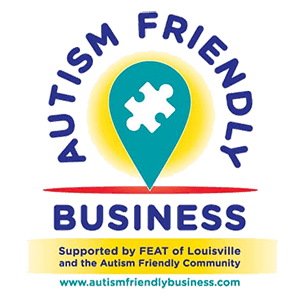A Space for Healing: The Perspective of a Play Therapist*

Children work through challenges and emotional stressors through their play and a Play Therapist can be a powerful witness to that process.
As a Marriage and Family Therapist Associate in practice at Creative Family Counseling in Louisville, KY, I work mostly with kids, teens and their families. The pandemic has changed many aspects of what therapy looks like; I practice via telehealth with many clients, conducting sessions with them via video conferencing. I also meet with younger clients (ages 4-12) in-person at the office while we are masked because meeting via telehealth with that age group is, typically, too challenging for them to engage in in a meaningful way longterm.
A therapeutic theory that I use with this age group that I’ve really been enjoying is Child-Centered Play Therapy, or CCPT. My therapy office has three bookshelves worth of toys, games, books and art supplies. As clients enter the room, I tell them, “You can do or say just about whatever you want in here and if there’s something you can’t do, I’ll let you know.” The clients then proceed to participate in therapy through play, games, and creating art, working through whatever they need to work through while I narrate their play like a sports commentator and reflect their emotions back to them. This helps them to understand how, at their developmental level, to identify various emotions and give voice to them, learning emotion identification, communication, and regulation skills along the way.
I always enjoy when I mis-identify a client’s emotion because if you tell a kid that they look surprised or upset when they do not actually feel that way, they are more than willing to let you know! At times in their counseling sessions, I have prepared more therapist-directed interventions that I work into the session to target specific therapy goals we are working toward, and I’m nearly always working with the parents conjointly to help them develop parenting tools and a game plan for when things get challenging or chaotic at home.
At times, it has been difficult for some parents to see the value in letting their kid play for 50 minutes while I empathically attune to them, and I can understand where these parents are coming from. When I was first learning this theory it didn’t make sense to me because I felt like all I was doing was hanging out with a kid and throwing some emotional terms in the air. But after I completed a few CCPT sessions, I realized that I was doing more than that. When I practice CCPT with child clients, I’m holding a space for their feelings and experiences to be seen and validated. I’m allowing the child to express exactly what they need and want to express at that moment and not insisting any more or less from them. This level of acceptance and understanding of another person takes focused time and attention, which CCPT sessions create, and at the developmental level of the child. It might not seem like much at first, but it is a huge step along the way through creating change and healing in therapy with a child.
Prior to pursuing a Master of Arts degree in Marriage and Family Therapy, I served with Hands and Feet of Asheville for the 2016-2017 year. I worked with the Asheville Poverty Initiative under the Rev. Dr. Shannon Spencer and helped to open one of her dream projects, 12 Baskets Cafe. 12 Baskets Cafe is a non-profit volunteer run cafe that serves rescued food to people on all ends of the poverty spectrum in West Asheville. 12 Baskets isn’t just a cafe, it is a community, which was Shannon’s plan since day one. My job title was Donation and Volunteer Coordinator so I made sure all of our food donations were picked up, re-panned, and frozen in a timely manner, on-boarded volunteers, and made sure the Cafe was open and running four days a week.
One thing I did every day at the cafe was sit down, take a break, and have lunch with some guests. Shannon always said that that is where community begins—in the sitting down and breaking bread with strangers. This was the part of the job some volunteers struggled with most because they felt like they could help most by making salads, clearing tables, taking orders, or doing the dishes. In reality, what seemed to mean most to our guests (and the volunteers when they actually did it) was when we all slowed down long enough to hear, see, and speak with one another.
12 Baskets celebrated its 4 year anniversary last October. The work is still in motion. Many volunteers I trained and worked with are still there. Many guests I met at the Cafe still come by, and some of them are now volunteers as well. I am proud of this work because it is so easy for me to see how the seeds that I helped to plant and cultivate have produced far beyond what I could have imagined. And for the most part all I did was hold the space and made sure the food was hot.
My work as both a Marriage and Family Therapist Associate and a volunteer at 12 Baskets have proven to me that what might seem most insignificant at the time has potential to be the most impactful in the long run. When I hold space for clients I slow down. When I joined guests at 12 Baskets, I slowed down. When we slow down long enough to see and hear each other, that is where healing enters and community begins. Participating in a space of no judgement and openness is a first step of sorts. Slowing down long enough to let someone else see your experience and validate your humanity is inherently a spiritual and interpersonal experience.
As a therapist, or as a volunteer at 12 Baskets, we may never see the complete fruits of our labor or the entire journey of a client or a guest, but that shouldn’t keep us from creating this opportunity for connection. In fact, taking those first steps may be the only thing we get to do for others in this life. Maybe it’s not the “finishing” or the “end result” that we see. Maybe it’s our purpose to help others along the way simply by holding space and slowing down.
During the pandemic and this season of physical distancing, finding new ways of creating and cultivating community has been a challenge and can definitely feel insignificant at times. Showing up for a friend’s birthday Zoom call, going for a walk in the park with someone you haven’t seen for a while, or (for those of us who bake for self-care) dropping baked goods off at the doors of some folks you think could use a smile are all examples of seeming insignificant moments, but they’re all just steps along the way. Showing up for others and validating their experience in that moment—that’s what we all need isn’t it?
What I see as both my role and my challenge in community is to create space for the seemingly insignificant while trusting that I might not see the complete fruits of my efforts — it is learning to see and create space for understanding and healing in those seemingly insignificant (but definitely significant) moments.
